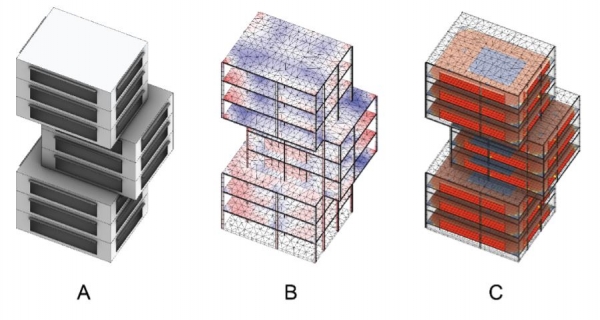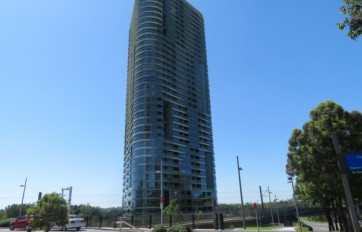New simulation tool for building design

A new simulation tool that utilizes many variables for the design and the initial phases of the building process has recently been introduced.
Designing and building are interconnected processes in civil engineering. Every project that is thoroughly designed tackles fewer issues during the construction process. However, not all parameters can be defined during the design hence, engineers handling the construction must come with solutions to certain issues that emerge.
Moreover, there is a critical issue that arises in engineering projects associated with the design and construction phases. Changes and corrections can be readily adapted when the project is under design, however, once the construction initiates and progresses, an unidentified fault will probably create a situation that would be very difficult to address. In addition, the financial damage in the second case will be much higher.
Apart from the construction procedures, the design process of a structure has to account for other factors. Some of them include the location of the project, the availability of raw materials, problems that can arise from climate change (possibly floods or extreme erosion in the location of interest) and others.
What is certain is that when taking more and more factors into consideration during the design of a project, it is less likely to have unpredictable difficulties in construction. A new, powerful tool known as Sustainability Evaluation for Early Design (SEED) developed by scientists from the Environmental Systems Lab at Cornell University, U.S., considers multiple parameters that affect the design and the initial construction stages of a building. Details on the new framework were published in the Journal of Building Performance Simulation.
How does the tool work?
SEED is a software that takes into consideration multiple design parameters (e.g., costs and materials, energy equilibrium, CO2 emissions, daylighting of indoor rooms) and can create multiple design scenarios for engineers and architects.
The tool provides the designers with a lot of options that can be employed during the construction process. Moreover, it aids in identifying potential issues that could emerge and that would not have been detected in time.
The study suggests that SEED will help designers at deriving the optimum design, reduce costs, save time and create more sustainable buildings.
The authors stated that their future goals are to improve SEED by making it more user-friendly and include more options regarding construction schedules, building design, etc. Their database will also be provided as an open-source archive.
SEED was firstly introduced by the team in 2019 at the International Building Performance Simulation Conference, in Rome.
Source: Cornell University Journal of Building Performance Simulation
Sources: Cornell University, Journal of Building Performance Simulation
Want to read more like this story?

Building collapse south of Indianapolis: 2 workers injured
Apr, 04, 2022 | NewsA building under construction collapsed, injuring at least two construction workers, authorities sa...

Cloud-Based Software Analyses Buildings’ Impacts on Climate Change
Apr, 16, 2015 | NewsSoftware developed by researchers at the Polytechnic University of Catalonia in Spain is taking off...

Carbon Reduction in Focus: Lessons from the Edge London Bridge Project
Jan, 20, 2025 | NewsA bold new addition to London’s skyline is taking shape near London Bridge. This 27-storey sustaina...

Kinetic Engineering to make buildings moveable
Aug, 03, 2018 | NewsA new revolutionary approach of building design suggests that a construction can be transformed...

Australia changes construction regulations after Opal Tower's cracking
Feb, 13, 2019 | NewsNew South Wales's state of Australia is about to drastically change its construction laws after the&...

New open source tool to evaluate buildings’ environmental impact
Aug, 15, 2018 | NewsAn open source computing tool that is capable of calculating CO2 emissions in every phase of a build...

The futuristic design of Hangzhou Olympic Sports Center
Oct, 05, 2018 | NewsHangzhou Olympic Sports Center will be an impressive engineering achievement that will host the 2022...

Construction industry advances in Antarctica
Jan, 15, 2020 | NewsThe construction industry aims at revolutionizing the buildings' design and aesthetics in Antarctica...

Bay Bridge: a troubled landmark is now complete
Feb, 03, 2015 | NewsThe most complex public works project in California history - the Bay Bridge's new eastern span - wi...
Trending

Vertical gardens in Mexico City to combat pollution

Characteristics of Load Bearing Masonry Construction

Taipei 101’s impressive tuned mass damper

Saudi Park Closed After 360 Big Pendulum Ride Crashes to Ground, 23 injured

Dutch greenhouses have revolutionized modern farming

Federal court rules Biden’s offshore drilling ban unlawful


